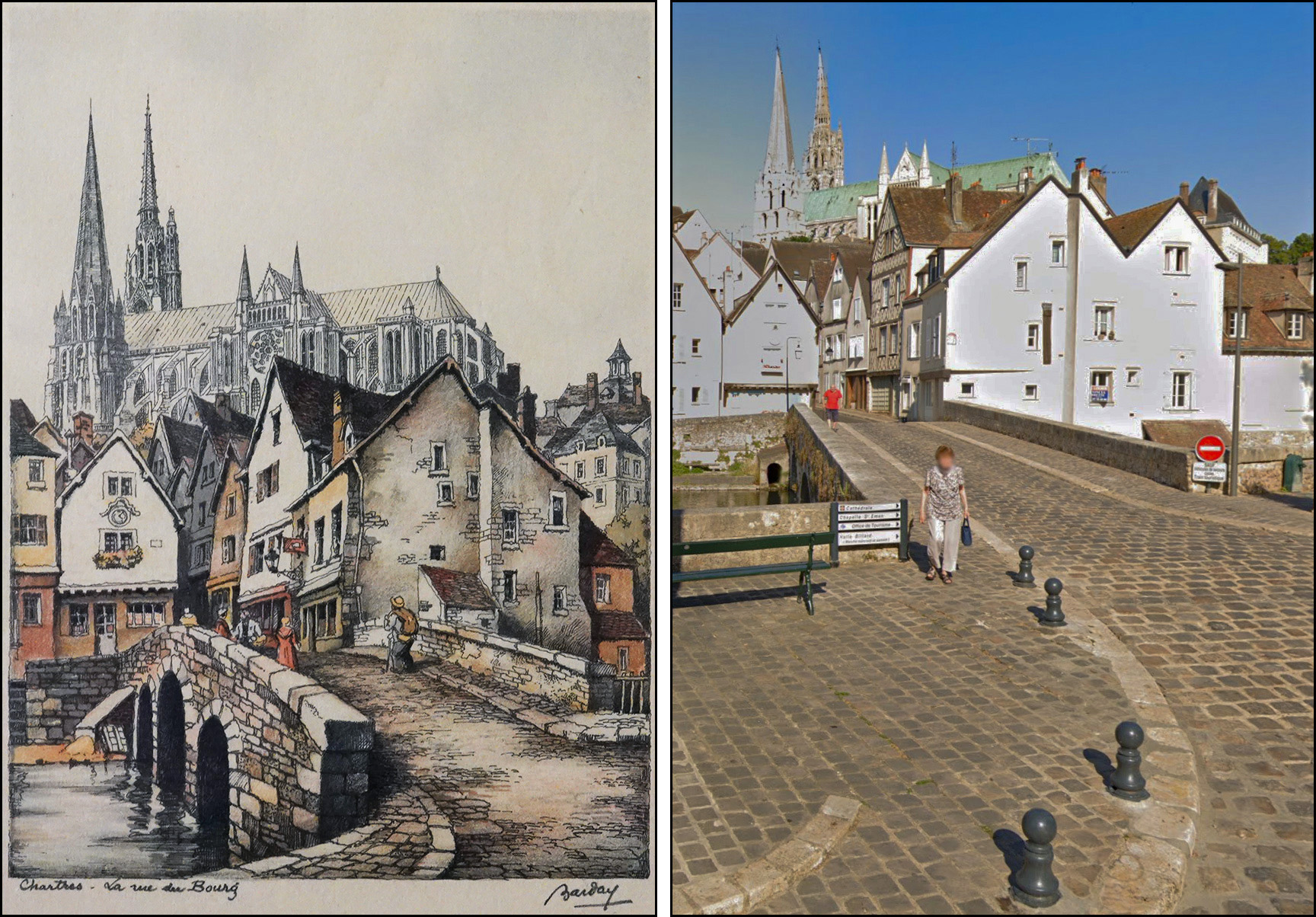It wasn’t really much of a mystery, was it? As many of you figured out, yesterday’s catblogging picture was a sketch of the cathedral at Chartres as seen across the Bouju bridge. What’s amazing in this era of the all-knowing internet is that I could go into Google Streetview and conjure up a photograph taken from nearly the same spot:

The sketch was done by a fellow named Barday, who apparently became well known as a postcard artist in the interwar years. He mostly did drawings of Paris, but occasionally made his way out to the provinces to tackle other postcard-worthy subjects. A quick search suggests that he did several drawings similar to this one, but I think mine is the best of the lot.
This lithograph was purchased by my grandparents during a trip to Europe in the mid-1930s. Barday seems to have taken some liberties with the perspective, and there are a few other odd places where he decided to move things around a bit, but for the most part it looks like the present-day neighborhood surrounding the bridge is pretty much the same as it was 90 years ago. To find it on Google Maps, just type “Pont Bouju Chartres.”

















